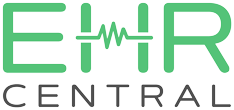Unlocking Revenue Wellness: A Guide to Collaborative Care Models in Community Behavioral Health Billing
In the ever-evolving landscape of healthcare, the integration of collaborative care models has emerged as a powerful strategy to enhance revenue wellness in community behavioral health settings. This paradigm shift is particularly vital in the context of

billing, where the traditional approaches are being reimagined to meet the complex needs of both patients and providers.
The Impact on Revenue Wellness
1. Streamlined Billing Processes
CoCM streamlines the billing processes by promoting a more coordinated approach to patient care. With a collaborative team in place, healthcare providers can code and bill more accurately for the array of services offered, leading to fewer billing errors and quicker reimbursements.
2. Increased Patient Engagement and Retention
A collaborative approach enhances patient engagement and retention by offering a more personalized and supportive experience. Improved patient outcomes lead to higher satisfaction, translating to increased loyalty and a positive impact on revenue streams.
3. Maximizing Reimbursement Opportunities
By addressing both behavioral and physical health aspects concurrently, CoCM opens new reimbursement opportunities. Payers increasingly recognize the value of comprehensive care models, making it possible for providers to bill for a broader range of services.
How EHRCentral enhances your healthcare practice?
Implementing CoCM in Community Behavioral Health Settings
1. Building a Collaborative Team
Assemble a multidisciplinary team consisting of psychiatrists, primary care physicians, nurses, social workers, and other specialists. Effective communication and shared decision-making are key components of a successful collaborative care model.
2. Utilizing Technology for Integration
Leverage technology to facilitate seamless communication and data-sharing among team members. Electronic Health Records (EHRs) and telehealth platforms can play a pivotal role in ensuring real-time collaboration, even in geographically dispersed settings.
3. Training and Education
Invest in ongoing training and education for your team to stay abreast of the latest developments in behavioral health billing and coding. This not only ensures compliance but also maximizes the reimbursement potential of your services.
The Future of Revenue Wellness
Collaborative Care Models in Community Behavioral Health Billing represent a forward-thinking approach that not only benefits patients but also contributes to the financial health of healthcare providers. By embracing this model, organizations can navigate the complexities of billing more effectively, ultimately leading to a more sustainable and thriving healthcare ecosystem.
In conclusion, the integration of Collaborative Care Models in community behavioral health settings is a strategic move toward enhancing revenue wellness. As the healthcare landscape continues to evolve, embracing innovative approaches to billing and care delivery is not just an option but a necessity for those seeking sustained success.





